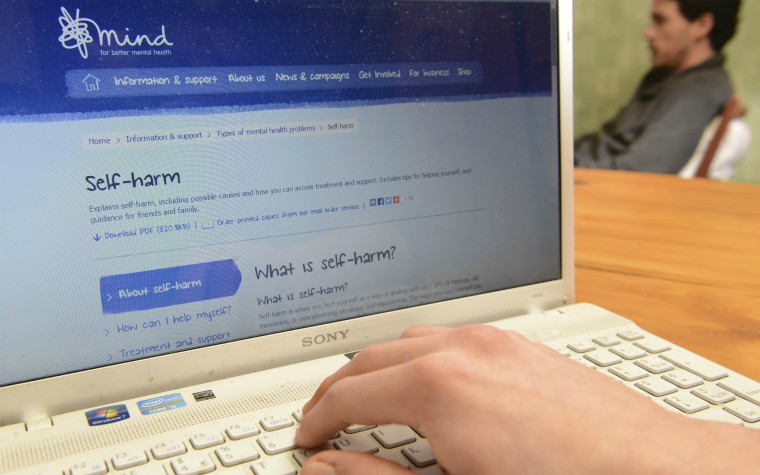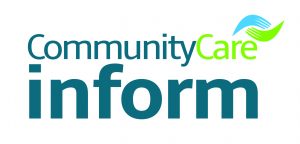
Trigger warning
This content discusses issues of self-harm, mental health and suicide. Please take the time to consider your own mental health, and seek support if you need it. In the UK, the Samaritans can be reached for free on 116 123.
 This article comprises excerpts taken from a podcast on Community Care Inform about looked-after children and self-harm. You can listen to the full podcast using the player below. It discusses why looked-after children are more at risk of mental health problems and how social workers can support young people and carers. Learn on the go is free to access on iTunes and other podcast players. Inform subscribers can access supporting resources including a written transcription and key points from the episode on Inform Children.
This article comprises excerpts taken from a podcast on Community Care Inform about looked-after children and self-harm. You can listen to the full podcast using the player below. It discusses why looked-after children are more at risk of mental health problems and how social workers can support young people and carers. Learn on the go is free to access on iTunes and other podcast players. Inform subscribers can access supporting resources including a written transcription and key points from the episode on Inform Children.The experts
Judith Furnivall: Lecturer and consultancy lead at the Centre for Excellence for Children’s Care and Protection at the University of Strathclyde, and undertaking a PhD on the suicides of care leavers.
Dr Eileen Harkness-Murphy: Lecturer at the School of Health and Life Sciences in the University of the West of Scotland, with a background in psychology and an interest in mental health and wellbeing, particularly among young people, and who has worked within a children and families’ social work area team.
What is self-harm?
Judith Furnivall
- One of the problems when we start to talk about self-harm is definition. At one level we all engage in a whole range of self-harming behaviours.
- However, what we’re talking about usually when we talk about the self-harm in this context is specific direct harm to the body in one way or another. So it may include cutting, burning, inserting objects, hair-pulling, hitting, as well as poisoning, either through drugs or taking in very dangerous substances such as different kinds of cleaning products. So it’s a complex thing.
- It’s also true to say that alcohol, drugs, risky behaviours, running away – a whole range of behaviours that young people who are in care engage in to manage their distress – could be seen as harming these children. But that’s not usually what we’re talking about.
- Sometimes people talk about self-harm as failed suicide. Actually it’s not. Most people who self-harm, at the point when they’re self-harming, are doing it in order to manage their distress. Some people talk about actually it’s a way of staying alive, rather than a way of ending life.
- On the other hand – and this is an important thing to take account of – a history of self-harm is probably the single biggest predictor of attempted or completed suicide.
One of the things that we know about self-harm is that it’s a way of controlling your own body because other areas of control feel like they’re taken away from you. Judith Furnivall
Working with young people at risk of self-harm
Eileen Harkness-Murphy
- Research in the field has reported many experiences, traits and characteristics that are found to be common among those engaging in self-harm. Those that are widely accepted include hopelessness, childhood trauma, dysfunctional childhood attachment, abuse, bullying, impaired coping, impaired problem-solving ability, self-criticism, low self-esteem: a range (O’Connor and Nock, 2014; Beautrais, 2000; Cukrowicz et al, 2004; Hasking et al, 2008; Hawton et al, 2002). The list is quite extensive, but it generally characterises a negative affective state and a kind of dysfunctional coping style.
- We know from the research that having people around you who self-harm or who have engaged in self-harming behaviours increases your risk of engaging in these behaviours by up to four times (Prinstein et al, 2010; Muehlenkamp et al, 2008; O’Connor et al, 2009a).
- Particularly if looked-after young people are in residential care and sharing the physical space with other people facing similar distress due to their experiences, dealing with these difficulties in a maladaptive way like self-harming will increase the risk of others around them engaging in these behaviours, also as a way to cope with their challenges. For social workers I think it’s important for them to work individually with the young person but also take into account the wider influential environment and the situational factors that impact the behaviour. So this could include a wider approach to their self-harm as a whole unit, to provide opportunities for the young people to express themselves and talk about their emotions, talk about the things that make them distressed and angry and upset before that pressure builds and becomes unbearable.
This content covers some difficult and sensitive issues, so please take the time to consider your own mental health, and seek support if you need it. In the UK, the Samaritans can be reached for free on 116 123.
Further guidance
Community Care Inform Children subscribers can access further in-depth guidance on working with looked-after children:
References
Beautrais, A L (2000)
‘Risk factors for suicide and attempted suicide among young people‘
Australian and New Zealand Journal of Psychiatry, Volume 34, pp236–420
Cukrowicz, K; Wingate, L; Driscoll, K and Joiner, T (2004)
‘A standard of care for the assessment of suicide risk and associated treatment: The Florida State University Psychology Clinic as an example’
Journal of Contemporary Psychotherapy, Volume 34, pp87-100
Hasking, P; Momeni, R; Swannell, S and Chia, S (2008)
‘The Nature and Extent of Non-Suicidal Self-Injury in a Non-Clinical Sample of Young Adults‘
Archives of Suicide Research, Volume 12, pp208-218
Hawton, K; Rodham, K; Evans, E and Weatherall, R (2002)
‘Deliberate self harm in adolescents: self report survey in schools in England‘
British Medical Journal, Volume 325, pp1207-1211
Muehlenkamp, J J; Hoff, E R; Licht, J-G; Azure, J A and Hasenzahl, S J (2008)
‘Rates of non-suicidal self-injury: A cross-sectional analysis of exposure‘
Current Psychology: A Journal for Diverse Perspectives on Diverse Psychological Issues, Volume 27, Issue 4, pp234-241
O’Connor, R C and Nock, M K (2014)
‘The psychology of suicidal behaviour’
The Lancet. Psychiatry, Volume 1, Issue 1, pp73–85
O’Connor, R; Rasmussen, S; Miles, J and Hawton, K (2009a)
‘Deliberate self-harm in adolescents: self-report survey in schools in Scotland‘
British Journal of Psychiatry, Volume 194, pp68-72
Prinstein, M J; Heilbron, N; Guerry, J D; Franklin, J C; Rancourt, D; Simon, V and Spirito, A (2010)
‘Peer Influence and Nonsuicidal Self-Injury: Longitudinal Results in Community and Clinically-Referred Adolescent Samples‘
Journal of Abnormal Child Psychology, Volume 38, pp669-682


 Family help: one local authority’s experience of the model
Family help: one local authority’s experience of the model  ‘I spent the first three months listening’: how supportive leadership can transform children’s services
‘I spent the first three months listening’: how supportive leadership can transform children’s services  How senior leaders in one authority maintain a culture of excellence
How senior leaders in one authority maintain a culture of excellence  How staff support ensures fantastic outcomes for children and families
How staff support ensures fantastic outcomes for children and families  Workforce Insights – showcasing a selection of the sector’s top recruiters
Workforce Insights – showcasing a selection of the sector’s top recruiters 

 Facebook
Facebook X
X LinkedIn
LinkedIn Instagram
Instagram
This is compassionate, straightforward and proactive, share with your workers and students ?